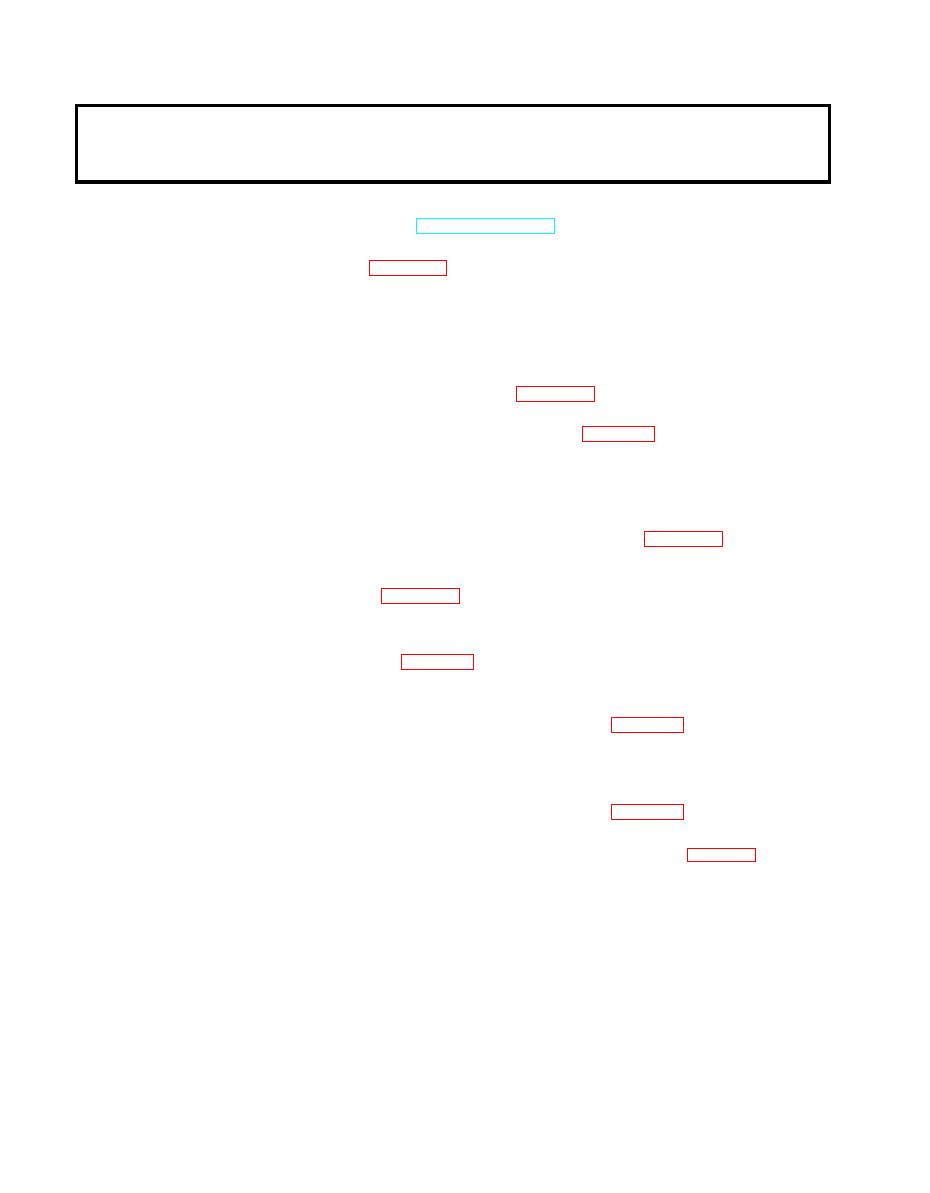
TM 9-2320-260-20
Table 2-3. Compressed Air and Air-Hydraulic Brake System Troubleshooting (Contd).
MALFUNCTION
TEST OR INSPECTION
CORRECTIVE ACTION
6. BRAKE SYSTEM DOES NOT OPERATE PROPERLY WHEN BRAKES ARE APPLIED OR RELEASED
Step 1. Check master cylinder fluid level (LO 9-2320-260-12).
If fluid level is low, fill to proper level.
Step 2. Bleed service brake system (para. 8-15).
Step 3. Check for restricted or damaged brake lines.
Clean or replace brake lines if restricted or damaged.
Step 4. Refer to malfunction 11 for insufficient or loss of air pressure.
Step 5. Check for defective wheel cylinder.
a. Inspect wheel cylinder for leaks and damage.
b. Replace wheel cylinder if leaking or damaged (para. 8-10).
Step 6. Check service brakeshoes for contamination.
Replace brakeshoes if contaminated by leaking brake fluid (para. 8-8).
Step 7. Check for defective master cylinder.
a. Direct assistant to pump brakes.
b. Check master cylinder for leaks.
c. Remove dust boot from master cylinder.
Replace master cylinder if brake fluid leaks from dust boot area (para. 8-11).
Step 8. Check for defective air-hydraulic cylinder.
Replace air-hydraulic cylinder if brake system continues to operate improperly after
performing steps 1 through 7 (para. 8-14).
END OF TESTING!
7. UNEVEN BRAKING
Step 1. Check service brake adjustment (para. 8-9).
If adjustment does not solve problem, perform step 2.
Step 2. Check service brakeshoes for wear, contamination, and darnage.
Replace service brakeshoes if worn, contaminated, or damaged (para. 8-8).
END OF TESTING!
8. NOISY BRAKES
Step 1. Check service brakeshoes for wear, contamination, and damage.
Replace service brakeshoes if worn, contaminated, or damaged (para. 8-8).
Step 2. Inspect service brakedrum for scrapes, scores, and uneven wear.
a. Replace brakedrum if scraped or scored more than 0.031 in. (0.79 mm) (para. 9-4 or 9-5).
b. Notify your supervisor if brakedrum is scraped or scored less than 0.031 in. (0.79 mm)
or worn unevenly.
END OF TESTING!
9. VEHICLE PULLS TO ONE SIDE WHEN BRAKING
NOTE
Vehicle pulling to one side indicates a malfunction in one of the
two front wheel service brakes.
2-92


